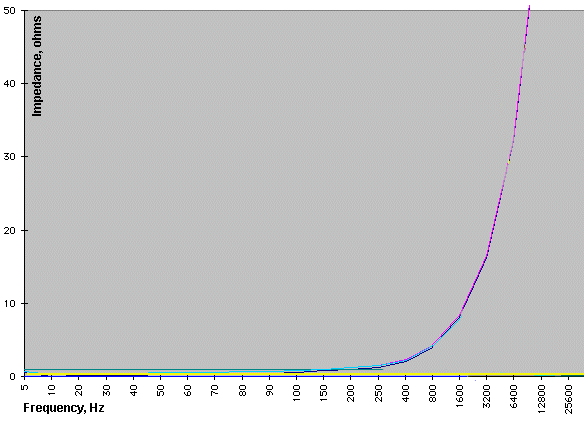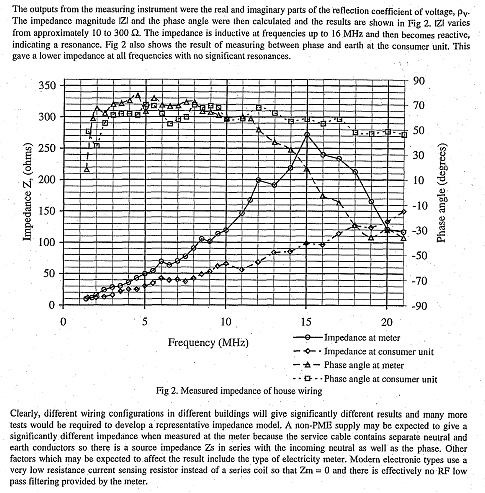
wired!
One of the factors frequently overlooked by the hifi comics is that the electrical mains is not infinitely powerful; more specifically it can exhibit significant reluctance to supply enough electrons. Sometimes the impression is left that you could have the entire output of SIzewell B on tap if you buy a big enough power cord. In this year's colour, of course....
It ain't necessarily so; it ain't even close. IEC725:1981 models the European domestic mains supply as having an impedance of (0.4+j0.25)ohms. Surprisingly, measurement shows that the UK agrees with or somewhat betters the model on the whole, at something like (0.25+j0.23) ohms. What does that really mean? It's a definition which include the real resistance of the distribution network and wiring up to the socket, estimated as 0.25ohms, plus the reactive (j) component, allowing for stray capacitance and inductance of the wiring. The impedance is dominated by inductance, and equates to roughly 0.23ohms in the UK, for a net supply impedance of nearly 0.5ohms at 50Hz.
Big deal, you say, that's not much; draw 10 amps and the supply drops maybe ~5volts. Indeed it wouldn't matter if all loads were purely resistive, and only drew power smoothly at 50Hz. The reality is that the current demands of real powered equipment is anything but resistive, and so there is significant current flowing at harmonic frequencies well above the basic 50Hz. Since the mains supply is a complex impedance, current flowing at higher frequencies will meet non-constant resistance to flow. The +j0.23 component equates to a series inductance of 0.75milliHenries, which is large enough to have significant effects on impedance at audio frequencies. Here's a very simple model of the effects:

The yellow line is the 'hifi mag' model of the mains: near-zero impedance, irrespective of frequency. Nothing impeding the flow of power.
The purple line is the reality; impedance rises steadily from low frequencies, quickly becoming significant, especially for harmonic currents at 250Hz (fifth harmonic) and above. In practice, there is a limit to this rise, which is basically the 'characteristic impedance' of the cables at RF - which is nominally about 100-150ohms.
Finding representative measurements isn;t that easy - but here's soemthing typical, from a paper studying powerline RF transmission (for broadband data):

A real mess, in other words! So the lesson to take away is simply that the impedance of the mains at audio frequencies and above is very ill-defined and widely variable, between 50 - c.2000ohms. It is not a nice infinite sink... and this has a couple of consequences for audio equipment:
© the twisted pair 2002